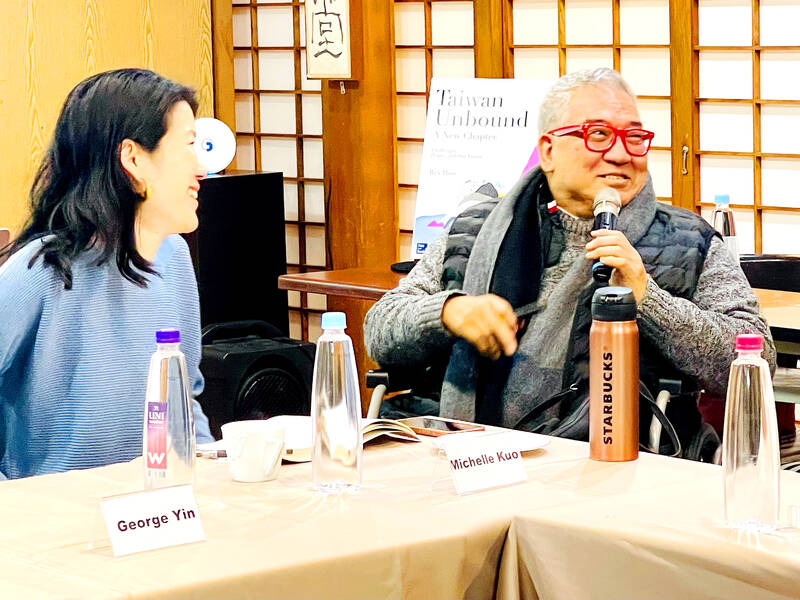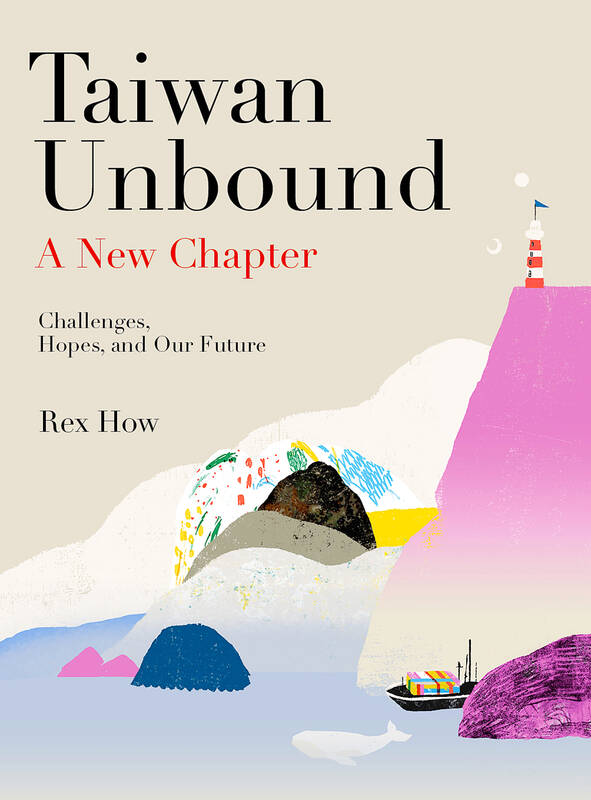The Sunflower movement of 2014 can be seen as a pivotal moment in Taiwan’s contemporary politics — one that has had ramifications for the current presidential campaign. Most obviously, the protest helped propel Ko Wen-je (柯文哲), the Taiwan People’s Party (TTP) presidential candidate, into public life, as he harnessed enthusiasm for greater political accountability and an end to partisan politics to capture the Taipei mayorship later that year.
Appearing alongside the protestors in and outside the occupied Legislative Yuan, Ko earned their trust as someone who was prepared to defend Taiwan against democratic backsliding as represented by the “black box” passage of the cross-strait service trade agreement.
A decade on, Ko is now calling for the resurrection of the trade pact. Accused of hypocrisy, he argues that it was always the underhanded way the Chinese Nationalist Party (KMT) tried to ram it through the legislature, rather than its content, that he had opposed. While some of his supporters, including former aides and associates, are appalled, others have remained unperturbed by even this most dramatic of U-Turns. What explains this unwavering support?

Photo courtesy of Locus Publishing
“He has a totally different mentality from other politicians that is quite suitable for today’s social media,” says Rex How (郝明義), a publisher and former journalist, with decades of experience in Taiwanese politics. “He says unusual things that make the young generation think that he’s candid.”
While media and opponents accuse Ko of frequent contradictions, he has cottoned on to the short attention spans that social media memes and reels engender and used them to his advantage. Highlighting Ko’s use of YouTubers and social media influencers, How says that feedback on trending topics among youngsters helps determine Ko’s talking points.
“If he doesn’t get a positive response, then he’ll change to a totally different direction,” How says. “So, in the evening, he’ll be talking differently from the morning, based on which is getting more volume.”

Photo courtesy of Locus Publishing
How offered these insights at the launch of the English-language edition of his book, titled Taiwan Unbound: A New Chapter.
As an advisor on cultural affairs to former president Ma Ying-jeou (馬英九) from 2009-2013, How had both a personal and professional connection to the trade deal debacle. In fact, he is acknowledged as playing a key role in exposing the closed-door negotiations over the pact between the KMT and the Chinese Communist Party.
Having published a widely circulated article on what he saw as the risks of the trade pact to Taiwan’s sovereignty, How resigned from his position and joined the Sunflowers in calling for “collective action to prevent the agreement’s implementation.”
Yet, as How notes in the book’s preface, the Sunflower movement “not only thwarted the [trade pact] but had a significant afterlife,” which included the emergence of Ko and the TPP as a political force.
‘OCEANIC GENERATION’
While How has little time for Ko’s brand of populist politics, he maintains faith that a new generation of Taiwanese will eventually turn the tide. He calls this the “Oceanic Generation” in reference to their outward view and reach, as opposed to the “terrestrial” mindset of their predecessors.
Others are less optimistic. Speaking at the same event, William Yang (楊?暐), queried How’s positive outlook in the current political climate.
“What I see in this election cycle is withdrawal from democratic rights and practices, and — at the same time — decisions being made irrationally,” says Yang, a freelance correspondent for Voice of America.
Having conducted extensive “on the ground” interviews and research among various demographics, Yang believes that decision-making is driven by misinformation and frustration. While the former is an issue among the older generation, the latter is a strong influence among the youth.
“Even students from top universities are either not coming out to vote or choosing the TPP because they feel cheated by the two big parties,” Yang says. He cites attempts to play up the “China-threat theory” and a failure to address domestic problems as factors.
“They don’t see the threat and they also don’t see the problems that are really troubling them being fixed,” he said.
FOOL ME ONCE
Because of this, the logic among such younger voters is that any new alternative is ipso facto better than the same tired old formula.
“It’s not because they support his policies but because [they think], ‘Even if we get cheated by him one time, at least we’ll know the next time.’”
Such a reaction, says Yang, is understandable. Yet, he fears the lack of interest in the “content” of politics in Taiwan does not bode well for future engagement among young people.
“They don’t seem to be interested in learning about policies that affect Taiwan,” Yang says. “Where do you get hope from the younger generation?”
While How agreed that the current cohort of young voters may be beyond reach, he is still confident that a new generation of politically conscious youth will blossom.
“The seeds and, in effect the cost, were planted 10 years ago [with the post-trade pact political climate],” How says. “But I’m still hopeful.”
How highlights developments in Taiwan’s education system, seismic during the transition to democracy, and incremental since that time, as reasons for optimism.
If, as predicted, the DPP wins again, the incoming administration must undertake reforms to the education and examination systems to encourage greater social and political participation.
“Everyone thinks that changing education is a long process,” How says. He quotes a Chinese proverb about the difficulty of cultivating an educated society to illustrate the deep-rootedness of this belief. “But it could also be the quickest way,” he says. “Because we have no other choice.”

As I finally slid into the warm embrace of the hot, clifftop pool, it was a serene moment of reflection. The sound of the river reflected off the cave walls, the white of our camping lights reflected off the dark, shimmering surface of the water, and I reflected on how fortunate I was to be here. After all, the beautiful walk through narrow canyons that had brought us here had been inaccessible for five years — and will be again soon. The day had started at the Huisun Forest Area (惠蓀林場), at the end of Nantou County Route 80, north and east

Specialty sandwiches loaded with the contents of an entire charcuterie board, overflowing with sauces, creams and all manner of creative add-ons, is perhaps one of the biggest global food trends of this year. From London to New York, lines form down the block for mortadella, burrata, pistachio and more stuffed between slices of fresh sourdough, rye or focaccia. To try the trend in Taipei, Munchies Mafia is for sure the spot — could this be the best sandwich in town? Carlos from Spain and Sergio from Mexico opened this spot just seven months ago. The two met working in the

Exceptions to the rule are sometimes revealing. For a brief few years, there was an emerging ideological split between the Democratic Progressive Party (DPP) and Chinese Nationalist Party (KMT) that appeared to be pushing the DPP in a direction that would be considered more liberal, and the KMT more conservative. In the previous column, “The KMT-DPP’s bureaucrat-led developmental state” (Dec. 11, page 12), we examined how Taiwan’s democratic system developed, and how both the two main parties largely accepted a similar consensus on how Taiwan should be run domestically and did not split along the left-right lines more familiar in

This month the government ordered a one-year block of Xiaohongshu (小紅書) or Rednote, a Chinese social media platform with more than 3 million users in Taiwan. The government pointed to widespread fraud activity on the platform, along with cybersecurity failures. Officials said that they had reached out to the company and asked it to change. However, they received no response. The pro-China parties, the Chinese Nationalist Party (KMT) and Taiwan People’s Party (TPP), immediately swung into action, denouncing the ban as an attack on free speech. This “free speech” claim was then echoed by the People’s Republic of China (PRC),